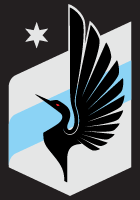Before construction could even begin on Allianz Field, there was much be done on and around the site where it would be sit. Assessments of the area would have to be performed and steps would have to be taken to repurpose the site. Systems would have to be put in place to capture and reuse rainwater. Plans would have to be made to green the space. But putting the home of Minnesota United at the intersection of Snelling and University Avenues came with at least one built-in advantage: a robust public transit infrastructure.
“Snelling and University Avenue is THE busiest intersection in the entire state of Minnesota,” said Justin Borrell, General Manager of Allianz Field. “Everything that came with that — including the A Line and soon the B Line and the Green Line — was key to the stadium plan.”
While many steps were taken in the construction of Allianz Field to used recycled steel, minimize environmental impact, ensure bird safety and in general exercise environmental responsibility, leaning into the use of pre-existing public transit with the help of Metro Transit and the City of Saint Paul was an effective way to integrate the stadium and its site into the existing community. Even so, there was work to be done to make the fans’ experience of getting to and from the stadium work as well as possible.
“There are a lot of unique elements that come along with the overall site as far as what Metro Transit can provide to the fan and what the fan expects of the club and what the club sees as a responsibility once they get off the train,” said Borrell. “We worked with the city of Saint Paul and some of the public works folks to figure out a way to get pedestrians across the street safely. So they re-did the south Snelling intersection at University and incorporated a pedestrian gate that's only open on gamedays. That helps with congestion at that intersection.”
In a neighborhood with limited parking options, it was always imperative to make sure the nearby public transit options functioned smoothly as part of the gameday experience, as well as continuing to serve the community around the stadium smoothly. The work has paid off, with 31 percent of fans attending a game opting for public transportation in 2019.




